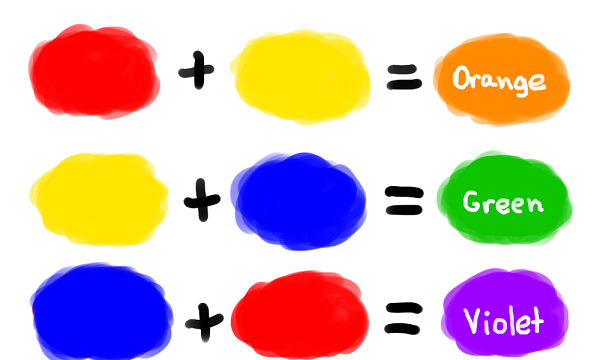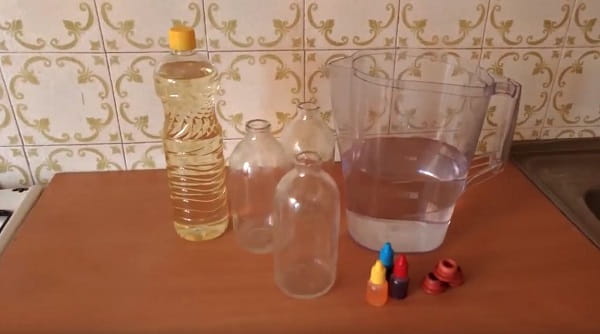Learn with your kids about colors in the most fun way possible, through the experiment! In the process, you will be learning colors and something extra – about chemistry in liquids
Have you ever been in a situation that you really needed a green color and all you have are some blue and yellow? Well, no worries! In this experiment, you will be learning colors and how to transform primary colors into secondary by combining them.
Color Theory:
Colors are all around us and play an important role in our life. They can affect our mood and make something more or less appealing.
But how do we perceive them? It’s quite a complex process involving vision, light and some individual interpretation. Objects are actually not colored, they just appear to be because of the way they reflect light.
We started to understand colors thanks to Sir Isaac Newton. In 1666, he conducted his famous prism experiment in which he showed that a glass prism can break up light into several different colors. Those colors were red, orange, yellow, green, indigo, blue and violet (colors of the rainbow) and he called them spectrum.
An interesting property of those colors was that all other imaginable colors could be produced by combining them. This model is called additive and its primary colors are red, green and blue (RGB). It’s widely used in electronic devices – computers and television.
In everyday life, there is another model used – material or subtractive model with primary colors red, yellow and blue. Those colors can’t be produced by mixing other colors and all other colors can be produced from them. Mixing primary colors gives us secondary colors – orange, green and violet. Tertiary colors are combinations of primary and secondary. This whole system is most often presented as a color wheel.
Beside the hue (is it red or blue), there are some other properties that specify the color. Tone defines how pure the color is, when we mix other neutral/grayscale colors we make the color softer, more toned. Adding pure white to the color is referred to as tint – lighter color. And adding black to the color is called the shade – darker color.
There are other properties such as saturation, brightness, and intensity which are used mostly in digital design.
Materials needed for Mixing Colors activity:
- Water
- Food coloring (yellow, red, blue and optionally others)
- Bottles with corks
- Oil (optional)
Instructions on doing the color experiment:
For detailed instructions on how to do this experiment, watch the video on the beginning of the article or continue reading.
1. Pour some water into the bottle and put a few (4-5) drops of the desired color, shake it in a way that water becomes colored.
2. Pour oil and watch how it stays on top of the water.
3. Choose another color and again put a few drops in the bottle. The color drops will stay on the oil.
4. Put the cork on and shake the bottle vigorously.
Voila! Depending on the colors you chose, you will get a new color in the bottle. There are many other possible combinations out there so try to experiment yourself and see if you can discover them.
What will you learn by Mixing Colors?
- You can get secondary colors by mixing primary colors
- Blue + Red = Violet
- Blue + Yellow = Green
- Red + Yellow = Orange
- Water and oil don’t mix
- Water is having a higher density than oil, therefore oil stays on the surface
When you’re done, you can apply those colors by making Homemade playdough or Rainbow colored rice and have even more fun! Or you can make your own Lava Lamp and if you’re feeling adventurous, try and make Homemade Plastic.
If you’re searching for some great STEM Activities for Kids and Child development tips, you’re in the right place! Check the Categories below to find the right activity for you.








5 thoughts on “Learning Colors – How to teach your Child about Colors”